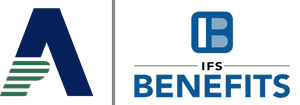
On July 1, 2021, the Department of Health and Human Services (HHS), the Department of Labor, and the Department of the Treasury (collectively, the Departments), along with the Office of Personnel Management (OPM) released an interim final rule with comment period (IFC), entitled “Requirements Related to Surprise Billing; Part I.” This rule related to Title I (the No Surprises Act) of Division BB of the Consolidated Appropriations Act, 2021 establishes new protections from surprise billing and excessive cost-sharing for consumers receiving health care items and services. This IFC implements many of the law’s requirements for group health plans, health insurance issuers, carriers under the Federal Employees Health Benefits (FEHB) Program, health care providers and facilities, and air ambulance service providers.
Background – Surprise Billing & the Need for Greater Protections
Most group health plans and health insurance issuers that offer group or individual health insurance coverage have a network of providers and health care facilities (in-network providers) that agree to accept a specific payment amount for their services. Providers and facilities that are not part of a plan’s or issuer’s network (out-of-network providers) usually charge higher amounts than the contracted rates the plans and issuers pay to in-network providers.
When a person with health insurance coverage gets care from an out-of-network provider, their health plan or issuer usually does not cover the entire out-of-network cost, leaving the person with higher costs than if they had been seen by an in-network provider. In many cases, the out-of-network provider may bill the individual for the difference between the billed charge and the amount paid by their plan or insurance, unless prohibited by state law. This is known as “balance billing.”
A “balance bill” may come as a surprise for many people. A surprise medical bill is an unexpected bill from a health care provider or facility. This can happen when a person with health insurance unknowingly gets medical care from a provider or facility outside their health plan’s network. Surprise billing happens in both emergency and non-emergency care.
In an emergency, an individual usually goes (or is taken) to the nearest emergency department. Even if they go to an in-network hospital for emergency care, they might get care from out-of-network providers at that facility.
For non-emergency care, an individual might choose an in-network facility or an in-network provider, but not know that a provider involved in their care (for example, an anesthesiologist or radiologist) is an out-of-network provider. In both emergency and non-emergency circumstances, the person might not be able to choose the provider or ensure that all of their care is from a participating provider. In addition to getting a bill for their cost-sharing amount (like co-payments, co-insurances, and any applicable deductibles), which tends to be higher for these out-of-network services, the individual might also get a balance bill from the out-of-network provider or facility. This is especially common in the context of air ambulance services, for which individuals generally do not have the ability to choose an air ambulance provider and have little or no control over whether the provider is in-network with their plan or coverage.
When individuals do not have an opportunity to select in-network providers, their health care costs go up overall. Surprise billing is often used as leverage by providers to get higher in-network payments, which result in higher premiums, higher cost sharing for consumers, and increased health care spending overall.[1] Studies have shown that surprise bills can be high.
- A recent study found that payments made to providers by people who got a surprise bill for emergency care were more than 10 times higher than those made by other individuals for the same care.
- Out-of-network cost sharing and surprise bills usually do not count toward a person’s deductible and maximum out-of-pocket limit. Individuals with surprise bills may have to spend more out-of-pocket because they have to pay their out-of-network cost sharing and surprise billing amounts regardless of whether they have met their deductible and maximum out-of-pocket limits. Nine percent of individuals who got surprise bills paid more than $400 to providers, which may result in financial distress for consumers, given recent findings that show 40% of Americans struggle to find $400 to pay for an unexpected bill.[2][3],
- Studies have shown that in the period from 2010-2016, more than 39% of emergency department visits to in-network hospitals resulted in an out-of-network bill, increasing to 42.8% in 2016. During the same period, the average amount of a surprise medical bill also increased from $220 to $628.[4]
- Although some states have enacted laws to reduce or eliminate balance billing, these efforts have created a patchwork of consumer protections.[5] Even in a state that has enacted protections, they typically only apply to individuals enrolled in health insurance coverage, as federal law generally preempts state laws that regulate self-insured group health plans sponsored by private employers. In addition, states have limited power to address surprise bills that involve an out-of-state provider.
Summary of IFC
This IFC protects individuals from surprise medical bills for emergency services, air ambulance services provided by out-of-network providers, and non-emergency services provided by out-of-network providers at in-network facilities in certain circumstances.
If a plan or coverage provides or covers any benefits for emergency services, this IFC requires emergency services to be covered:
- Without any prior authorization (i.e., approval beforehand).
- Regardless of whether the provider is an in-network provider or an in-network emergency facility.
- Regardless of any other term or condition of the plan or coverage other than the exclusion or coordination of benefits, or a permitted affiliation or waiting period.
Emergency services include certain services in an emergency department of a hospital or an independent freestanding emergency department, as well as post-stabilization services in certain instances.
This IFC also limits cost sharing for out-of-network services subject to these protections to no higher than in-network levels, requires such cost sharing to count toward any in-network deductibles and out-of-pocket maximums, and prohibits balance billing. These limitations apply to out-of-network emergency services, air ambulance services furnished by out-of-network providers, and certain non-emergency services furnished by out-of-network providers at certain in-network facilities, including hospitals and ambulatory surgical centers.
Cost-Sharing Amounts:
This IFC specifies that consumer cost-sharing amounts for emergency services provided by out-of-network emergency facilities and out-of-network providers, and certain non-emergency services furnished by out-of-network providers at certain in-network facilities, must be calculated based on one of the following amounts:
- An amount determined by an applicable All-Payer Model Agreement under section 1115A of the Social Security Act.
- If there is no such applicable All-Payer Model Agreement, an amount determined under a specified state law.
- If neither of the above apply, the lesser amount of either the billed charge or the qualifying payment amount, which is generally the plan’s or issuer’s median contracted rate.
Similarly, cost-sharing amounts for air ambulance services provided by out-of-network providers must be calculated using the lesser of the billed charge or the plan’s or issuer’s qualifying payment amount, and the cost sharing requirement must be the same as if services were provided by an in-network air ambulance provider.
Balance Billing:
Under this IFC, surprise billing for items and services covered by the rule generally is not allowed.
Determining Out-of-Network Rates:
Under this IFC, the total amount to be paid to the provider or facility, including any cost sharing, is based on:
- An amount determined by an applicable All-Payer Model Agreement under section 1115A of the Social Security Act.
- If there is no such applicable All-Payer Model Agreement, an amount determined by a specified state law.
- If there is no such applicable All-Payer Model Agreement or specified state law, an amount agreed upon by the plan or issuer and the provider or facility.
- If none of the three conditions above apply, an amount determined by an independent dispute resolution (IDR) entity.
The Departments intend to issue regulations soon regarding IDR entities and the IDR process.
In limited cases, a provider or facility can provide notice to a person regarding potential out-of-network care, and obtain the individual’s consent for that out-of-network care and extra costs. However, this exception does not apply in certain situations when surprise bills are likely to happen, like for specified ancillary services connected to non-emergency care, such as anesthesiology or radiology services provided at an in-network healthcare facility.
Notice to Consumers:
This IFC requires certain health care providers and facilities to make publicly available, post on a public website, and provide to individuals a one-page notice about:
- The requirements and prohibitions applicable to the provider or facility under Public Health Service Act sections 2799B-1 and 2799B-2 and their implementing regulations.
- Any applicable state balance billing limitations or prohibitions.
- How to contact appropriate state and federal agencies if someone believes the provider or facility has violated the requirements described in the notice.
Applicability Date & Comment Period
The regulations are generally applicable to group health plans and health insurance issuers for plan and policy years beginning on or after January 1, 2022. The HHS-only regulations that apply to health care providers, facilities, and providers of air ambulance services are applicable beginning on January 1, 2022. The OPM-only regulations that apply to carriers under the FEHB Program are applicable to contract years beginning on or after January 1, 2022. Written comments must be received by 5 p.m. 60 days after display in the Federal Register to be considered.
Visit https://www.cms.gov/files/document/cms-9909-ifc-surprise-billing-disclaimer-50.pdf to read more about the interim final rule.
Originally posted on CMS.gov
[1] Cooper, Z. et al., Surprise! Out-of-Network Billing for Emergency Care in the United States, NBER Working Paper 23623, 20173623; Duffy, E. et al., Policies to Address Surprise Billing Can Affect Health Insurance Premiums. The American Journal of Managed Care 26.9 (2020): 401-404; and Brown E.C.F., et al., The Unfinished Business of Air Ambulance Bills, Health Affairs Blog (March 26, 2021), doi: 10.1377/hblog20210323.911379, available at https://www.healthaffairs.org/do/10.1377/hblog20210323.911379/full/.
[2]Biener, A. et al., Emergency Physicians Recover a Higher Share of Charges from Out-of-network Care than from In-network Care, Health Affairs 40.4 (2021): 622-628.
[3]Board of Governors of the U.S. Federal Reserve System. Report on the Economic Wellbeing of U.S. Households in 2018. (May 2019). Available at https://www.federalreserve.gov/publications/files/2018-report-economic-well-being-us-households-201905.pdf.
[4] Sun, E.C., et al. “Assessment of Out-of-Network Billing for Privately Insured Patients Receiving Care in In-network Hospitals.” JAMA Internal Medicine, 179.11 (2019): 1543-1550. Doi:10.1001/jamainternmed.2019.3451.
[5] States that have enacted balance billing protections include Arizona, Colorado, Delaware, Indiana, Iowa, Maine, Massachusetts, Minnesota, Mississippi, Missouri, New Mexico, North Carolina, Pennsylvania, Rhode Island, Texas, Vermont, and Washington.



